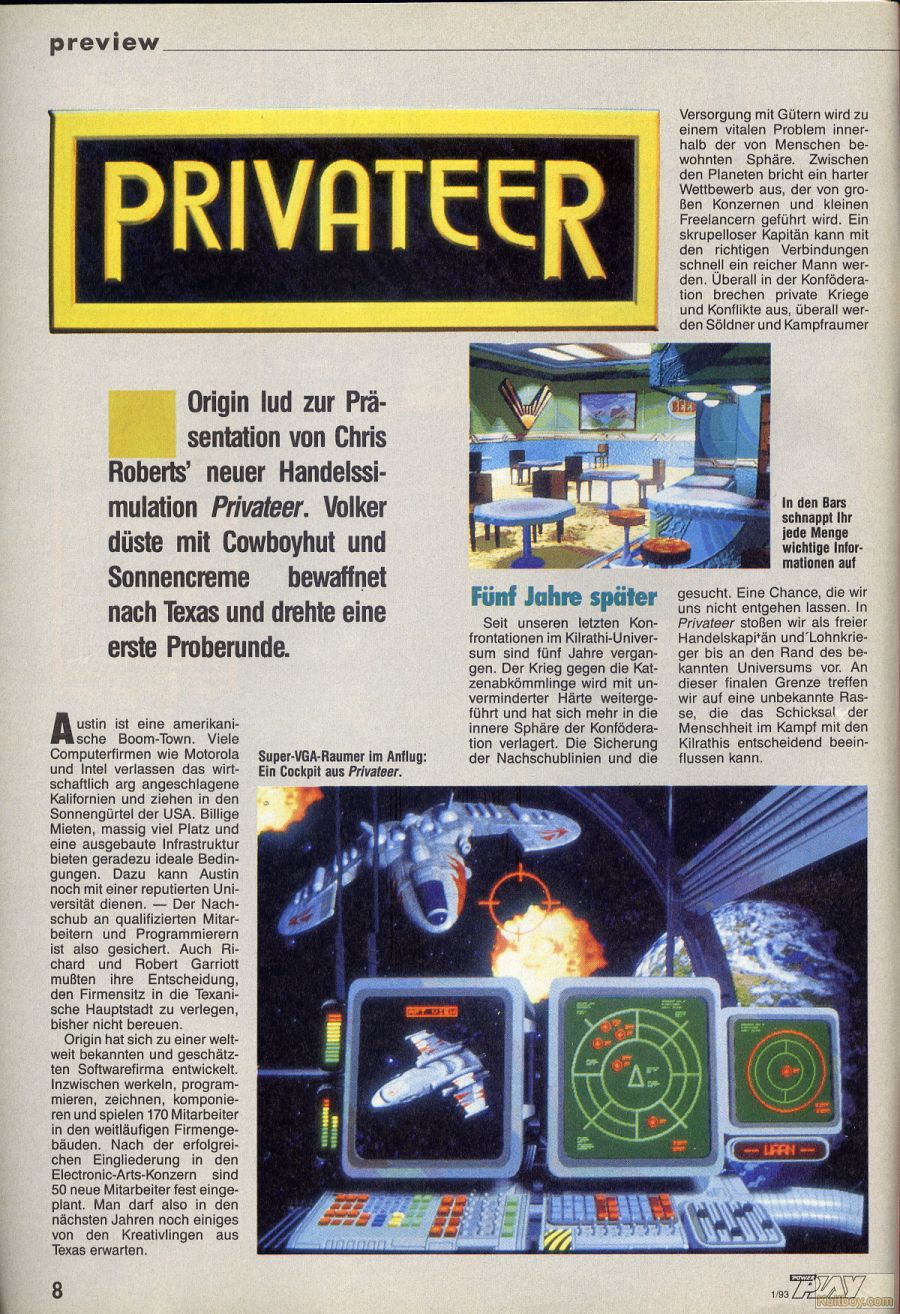This is a very interesting part of game development and one no one writes about. When we think about working at Origin, we tend to think of the big product groups, or development teams--Lord British Productions for Ultima, Maverick for Wing Commander, Jane’s Skunkworks for simulators, Loose Cannon for Crusader (and then smaller groups or less sexy ones, like the folks working on specific console games and conversions.) But the more ‘permanent’ part of the organization was the support teams that touched every project: Quality Assurance, IT support, web development, community management (towards the end)… and of course marketing and PR.
Origin had a public relations director who was responsible for working with magazines for these kind of stories… and also for pushing the case that magazines should be featuring Origin games whenever possible. For the big ones: you would ‘sell’ a story to a particular outlet and in the process promise them particular content. We’ll do a unique cover for you, we’ll provide you new screenshots, we’ll give you a one-on-one with Chris, we’ll fly you out to Austin and show you the latest build. The public relations director would then work with a particular team’s producer to schedule out assets to hand over--they need X screenshots that show Y, they need to see a build that can do this, etc.
The PR department would also create press kits that would be distributed more broadly, which is why you see a lot of ‘common’ screenshots appearing in multiple reviews. Origin would send a copy of a game with a folder of information about it (sales slicks, sheets about what other outlets are saying, etc.) and some assets so articles could be written easily. An ‘EPK’ is an Electronic Press Kit, one which includes multimedia. I’m not aware of Origin doing any EPKs with diskettes, but that’s largely because before 1994 magazines weren’t made digitally… they were still laid out by hands, and so they received their screenshots as physical slides! (There were CD-based EPKs for Wing Commander IV and Prophecy… I believe WC3 had a VHS tape of the trailer!)
The timing (especially before digital layouts) was very difficult to manage. The ‘lead time’ for publications could be weeks or even months. You want your game on the cover of CGW when it ships… which means you have to a) know when your game is coming out (hard!) and b) have ‘show ready’ assets in someone else’s hands six weeks or more in advance of when you go gold (impossible!) People imagine building a game as like a pyramid where you’re adding bricks and bricks until it’s done… but the reality is that they don’t really look like anything you’d want to show anyone until the polish at the very end. So when Origin needed to start promoting Privateer in magazines, there weren’t any screenshots that actually showed how Privateer was going to look. Instead, they would take stock of the assets that exist (3D cockpits for this ship are done, sprites for this ship are done, we think the radar will look like this, etc.) and create ‘bullshots’ by piecing them together and imagining the gaps. (This is also exactly what happened with the Wing Commander I box. You’ll notice that previous Origin games were screenshots or photographs of models… that’s because those could be used in advertising months earlier than screenshots and boxes could be printed well in advance. Chris wanted to show the real game on the Wing Commander box, so they had to fake it in order to make that possible.) I think we tend to think of this as ‘sinister’ in some way, but the truth is it was always an honest attempt to show people what they were going to play… it’s just that in many cases, the “reality” of your plans aren’t clear until that last stage. Privateer COULD have a Gothri that looks like that… but in order to fit on six disks instead of eight, the resolution might need to be reduced (well, it certainly did!),.. Meanwhile, QA would have put the game through its paces and the result could be that the radar system or the targeting system or any individual piece might have to be changed completely for playability. So think of that screenshot as more of a prediction than a lie!




